|
The Library’s archival, rare, and special
collections section can be reached by taking the single elevator or stairs
in the south-east corner (past the Circulation/Reserve area) to the lower
level where researchers can use materials in the Wellington County Room.
TRELLIS, the
TriUniversity Libraries catalogue, is the primary tool for identifying and
locating materials in Archival and Special Collections. TRELLIS can
be accessed via the Library’s home web page (http://www.lib.uoguelph.ca),
where various electronic resources, such the rare books in Early English
Books Online and Eighteenth Century Collection Online are also
available.
HISTORY
Begun in 1975 with the acquisition of a
collection of 110 pamphlets, the collection was slowly expanded until 1983,
when an additional major collection was acquired to bring the total to
approximately 450. Since then, a major bound volume was acquired from the
Library of the Free Church College in Edinburgh with 110 pieces of primary
material, mainly consisting of broadsides of petitions (signed), notices,
monthly statements, posters, etc. These documents date from November 1842 to
August 1845 and concern the establishment of the Free Church of Scotland.
Also included are pamphlets, beginning as early as 1817, concerning the
problems which led to the Disruption; pamphlets by the eventual leaders in
the schism from this early period; and pamphlets from the post-Disruption
era to the 1890s, when attempts were made to re-unite the various splinter
churches. After 1990, the library continued to acquire pamphlets and
histories bearing on issues that led to the Disruption.
DESCRIPTION
The greatest strength of the collection is the
primary pamphlet and broadside material, which all sides of the controversy
used to build and defend their cases. However, material on all aspects of
the Disruption is collected, from the early publications of the ministers
who became the leaders in the movement, to primary and secondary sources on
early controversies that led to the Disruption in 1843 and to later works
about the period and attempts up to the present day to reunite the various
sects that came out of the schism. Of special importance are the few
contemporary works, primarily in pamphlet form, of the Disruption in Canada
and particularly in Ontario.
LANGUAGE
Virtually all of the material is English
language, although a few items were published in Gaelic. Secondary material
is acquired in any language, but almost no secondary titles have been
published in other languages.
HOLDINGS
There are 850 pamphlets (one bound volume of 110
pieces of pamphlets), leaflets and broadsides concerned with the founding of
the Free Church; 70 items in the archives; supporting secondary materials of
more than 100 circulating monographs.
BIBLIOGRAPHIC ACCESS
All titles are catalogued. Access is via the
library’s online catalogue, Trellis. LC classification is used.
PHYSICAL ACCESS
The collection is open to the public. The
regular hours of opening for circulating collections in the library are
posted. Rare and archival collections are open Monday-Friday, 8:30 a.m.-4:45
p.m. (4:30 p.m. in summer)
Interlibrary Loan:
Available except for rare and archival
materials.
Reprography:
As the condition of the material warrants, and
as the copyright allows.
Reference Assistance:
Yes.
PUBLICATIONS DESCRIBING COLLECTION
Reid, W. Stanford. -- "The Pamphlet Collection
on the Church of Scotland's Disruption of 1843". -- Collection update.
No. 7 (May 1983). -- [Guelph, Ont.]: University of Guelph Library, 1983.
SELECTIONS
John Hope, Letter to the Lord Chancellor on
the claims of the rare books s0062b02
Church of Scotland (1839)
Church of Scotland’s claim of right
(1842) rare books
s0393b03
John Bayne, Was the recent disruption of the
Synod of Canada, in
connection with the Church of Scotland, called for? (1846)
rare books s0124b24
Three plain reasons : why all good people who
have not left, should now
leave the church established by law in Scotland
(184-) broadside s0392b05
United Secession Church, Declaration of the
United Associate Synod (1825) rare books s 0393b04
THE
PAMPHLET COLLECTION ON THE CHURCH OF SCOTLAND’S DISRUPTION OF 1843
As a number
of Scottish historians have interpreted it, the disruption of the Church of
Scotland and the formation of the Free Kirk in 1843 was next to the
Reformation in importance in the history of modern Scotland.1 It
was the withdrawal of more than half of the ministers and about one third of
the laity from the established church, to form a new body free from
government control. This movement in turn had an important influence in
Canada through such a supporter of the Free Kirk as George Brown of the
Toronto Globe, and resulted in the splitting of a large number of
Presbyterian congregations across the continent. In Guelph, itself, for
instance, more than half the members of St. Andrew’s Church left to form
Knox Church.2 Thus, this movement has its effects, even today,
very close to home.
The roots
of the movement which led to the disruption go back to the Evangelical
Revival of the late eighteenth century. Originating in England, under the
influence of men such as George Whitefleld, the movement spread north into
Scotland where it had exercised a very considerable influence. The result
was twofold. On the one hand, there gradually grew up opposition to the
heritors’, i.e. the landowners’ rights of patronage, by which they could
present the ministers to the congregations in their areas. Although
presbyteries had the duty to examine and approve the candidates, the
pressure was often such that very often the church courts simply did as they
were told, and not infrequently those appointed were not evangelical, and in
fact not even very interested in the caffing to the ministry. On the other
hand, the evangelical movement resulted in the establishment of new
churches, usually ministered to by evangelical ministers who did not receive
any support from the teinds (tithes), but were entirely dependent upon
freewill offerings. Added to this, they were not recognized as members of
the church courts, and so could have no say in its policies and actions.
These two matters in turn led on to other developments with which we cannot
deal in this short note.
By 1830 a
conflict was beginning to develop between the evangelicals, who wanted
patronage very carefully controlled and limited and who wanted the ministers
of the “chapels of ease” (quoad sacra congregations) admitted
to full status in the church courts, and those who opposed these ideas. The
result was a pamphlet war, of which the university library has some 110
items, which is one of the largest collections of disruption pamphlets in
existence. The collection is valuable as it gives a close-up picture of the
controversy, which enables a student of the movement to gain a thorough
understanding of the principles involved on both sides. Furthermore, in the
various pamphlets one gains some understanding of the inside history of the
Church of Scotland from the days of Knox and Andrew Melville.
The
earliest of the pamphlets goes back to 1831, two or three years before what
has been called “the Ten Years’ Conflict”.3 In that year the Rev.
Alexander Clark published a pamphlet on The Rights of the Members of the
Church of Scotland in which he insisted that ministers could be settled
in congregations only if the members had called them. But this in turn led
on to other questions. The heritors who paid the teinds claimed that
according to the law, they had the right to determine who would be the
minister, or at least who would receive the stipend on the principle that
“he who pays the piper, calls the tune.” This led on to the whole question
of whether the church should be established as a national church. The
outcome was a series of court cases which eventually went on appeal to the
Judicial Committee of the House of Lords.
Probably
the most important case was that concerning the parish of Auchterarder,
whose members had refused a presentee of the local patron who then appealed
to the civil courts. The outcome was a long drawn court battle in which the
Dean of Faculty, John Hope led the forces opposed to those who favored
“non-intrusion.” In 1834 the General Assembly had passed a Veto Act which
made it impossible for a considerable element in any congregation to block
the appointment of a minister which it did not want, and somewhat later it
had established a “non-intrusion committee” to take action to guarantee that
unwelcome ministers would not be forced on congregations. Hope maintained
that the Veto Act was ultra vires and also called in question
the right of the Assembly to accept the ministers of chapels of ease as
members of the church courts, thus giving a majority to the evangelical
element. Many of the pamphlets in the collection deal with this and similar
cases, setting forth both sides.
From 1840
on the controversy became increasingly hot. Thomas Chalmers, Robert S.
Candlish, Robert Buchanan, Hugh Miller and various other leaders on the
evangelical side entered the pamphlet war with great vim and vigor, their
pamphlets often running to around 75 or 80 pages of closely
packed
reasoning. In return those who insisted that patronage must be continued and
everything maintained as it had been, replied with equal volume. This latter
group succeeded in gaining the support of the English element in parliament
and generally the Scottish members in both Commons and Lords followed the
same line. Lord Brougham was particularly anti-non-intrusionist.
Because of
the rejection of the “non-intrusionist” claims by the House of Lords,
Chalmers, Candlish and others called a special convocation in the spring of
1842 to consider what action should be taken. It was decided that withdrawal
from the established church could be the only solution. As a result when the
General Assembly met in May, the retiring Moderator, Rev. D. Welch, before
vacating his position read a long statement “The Church of Scotland’s Claim
of Right”, and then, followed by a large part of the assembly, he walked out
through a cheering crowd and in another part of Edinburgh organized the
Church of Scotland Free.
This,
however, did not end the pamphlet war. Although some 450 ministers out of
750 had withdrawn from the Church of Scotland, those who remained proceeded
to attack the rebels with pamphlets, sometimes even trying to persuade them
to return to the fold. Their attempts, however, proved vain and the Free
Kirk replies to their pamphlets were vigorous and unyielding. Led by Thomas
Chalmers, the first Free Kirk assembly’s moderator, they were not prepared
to return to the established church which they felt had sold out to the
patrons and the government.
Reading the
various pamphlets on both sides of the issue, one gains a clear picture not
only of the legal and ecclesiastical issues involved, but also of the
emotions which the controversy aroused throughout Scotland, and overseas in
colonies such as the Canadas.
1 One of the best summary accounts of
the disruption will be found in J.H.S. Burleigh, A church history of
Scotland (London, 1960), pp. 334ff.
2
W.S. Reid, A century and a half of witness (Mississauga, Ont., 1980),
p. 11.
3
R. Buchanan, The ten years’ conflict (Glasgow, 1954), 2 vols.
W.
STANFORD REID
SCOTTISH
CHURCH AND RELIGIOUS HISTORY
The Library’s
archival, rare, and special collections section can be reached by taking the
single elevator or stairs in the south-east corner (past the
Circulation/Reserve area) to the lower level where researchers can use
materials in the Wellington County Room.
TRELLIS,
the TriUniversity Libraries catalogue, is the primary tool for identifying
and locating materials in Archival and Special Collections. TRELLIS
can be accessed via the Library’s home web page (http://www.lib.uoguelph.ca),
where various electronic resources, such the rare books in Early English
Books Online and Eighteenth Century Collection Online are also
available.
HISTORY
Collections on
Scottish religious history
commenced with the establishment of the History Department in 1965 and its
chairman, W. Stanford Reid, who was particularly interested in Scottish
church history. Grants from the Macdonald Stewart Foundation in the early
1970s were used to purchase primary materials for the early period of the
Scottish Covenanters (1638-51), who had pledged to maintain the Presbyterian
doctrine and polity as the sole religion of their country. In the 1980s, two
major purchases were made. First, the acquisition of pamphlets on the
followers of Richard Cameron, the Cameronian Covenanters, expanded the later
covenanting period (1680-91). Second, about 200 items concerning the
formation of the Catholic Apostolic Church founded by Edward Irving in the
1830s were acquired. After 1990, the library continued to acquire pamphlets
and histories, many of these being located in the circulating holdings
outside the rare book and special collections.
DESCRIPTION
The collection is
particularly strong in primary materials of the early covenanting period.
The later period of the Cameronian Covenanters (1681-1690) is well
represented.
Material on many aspects of Scottish religious and church history is
collected with two exceptions. Scottish sermons are collected only if they
are of interest beyond the purely theological, for example, sermons by the
clergyman, Samuel Rutherford (1600-61), while primarily doctrinal and
theological in nature, are in essence the justification for the actions of
the Cameronian Covenanters in the 1680s. Another exception is that Scottish
church hymnals are collected only to exemplify important changes in church
policy or disputes. Overall, the greatest strength is the primary pamphlet
and broadside material, which all sides of the controversy used to build and
defend their cases.
Pamphlets, monographs, and a few broadsides are represented
in the collection for the Catholic Apostolic Church.
LANGUAGE
English predominates.
Materials in any language for critical works and especially French and Latin
for primary sources are collected if they are on the Covenanting period.
Gaelic
biblical material is limited to a few examples from significant periods of
translations.
HOLDINGS
There are more than 3,000
monographs, theses, serials, pamphlets, maps, and archival resources.
For the Covenanting
period there are approximately 300 titles monographs, theses, pamphlets,
maps, facsimile reprints and microforms; of these, about 100 items are rare
books and there are 60 microfilm reels of related manuscript material are in
the archives. For the Catholic Apostolic Church there are 200 pamphlets
located in rare books.
BIBLIOGRAPHIC ACCESS
All titles are catalogued and
access is via the library’s online catalogue, Trellis. LC classification is
used.
PHYSICAL ACCESS
The collection is open to the public. The hours
of opening for circulating books in the library are posted. Rare and
archival collections are open Monday-Friday, 8:30 a.m.-4:45 p.m. (4:30 in
summer).
Interlibrary Loan:
Available, except for rare
and archival materials.
Reprography:
Yes, as the condition of the
material warrants, and as the copyright allows.
Reference Assistance:
Yes.
SELECTIONS
Covenanters
John Scott, Covenanters confession of faith… archives XS1
MS A228 (boxed with XS1 MS A214)
Collection of documents relating to the
Cameronian Covenanters archives XS1 MS A106
(boxed with XS1 MS A099)
James Kea, A sermon preached at Glasgow in
Scotland (1679?) rare books s0541b30
John Glas, A narrative of the rise and
progress of the rare books s0197608
controversy about the national covenants (1728)
Mark Napier, Montrose and the covenanters
(1838) rare books s0104b16-17
Large declaration concerning the late
tumults in Scotland (1640) rare books
s0538b35
A proclamation declaring Mr. Richard
Cameron, and others archives XS2 MS
A007
rebels and traitors
(1680)
Catholic Apostolic Church
Edward Irving, Declaration from the National
Scotch Church (1830) rare books s0199b23
Thomas Carlisle, The church of Christ in her
offices, gifts and
privileges taken solely from the
word of God (1834) rare
books s0197b34
John Bate Cardale, The confession of the
church (1848) rare books s0199b24
There are a lot of pamphlets of the Scottish
Disruption...
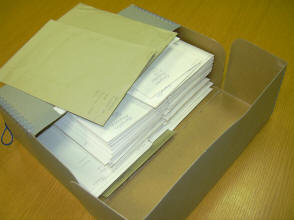
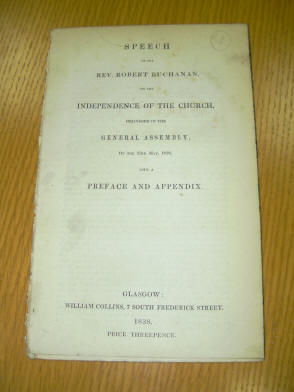
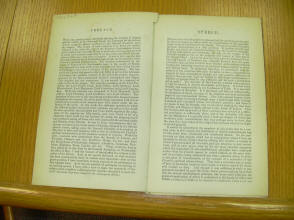
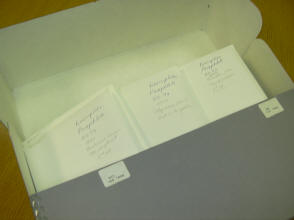
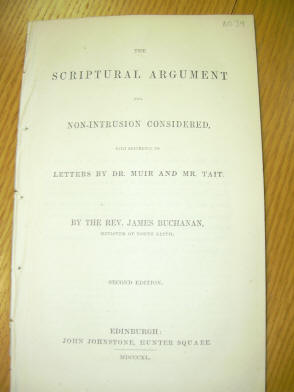
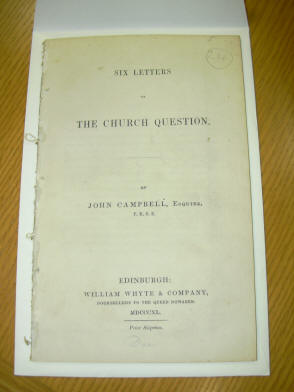
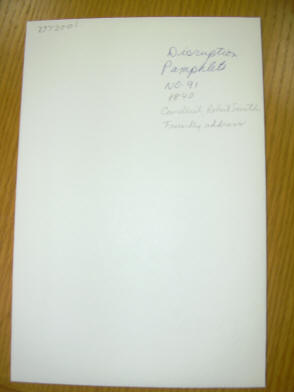
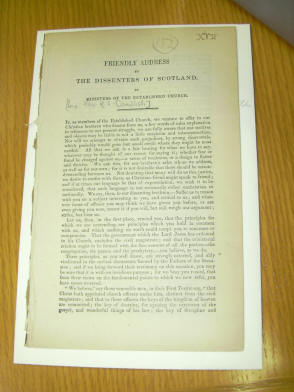
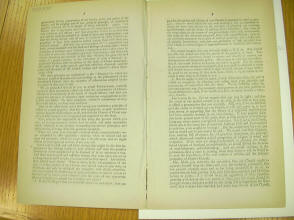
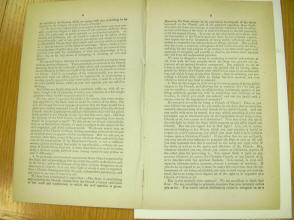
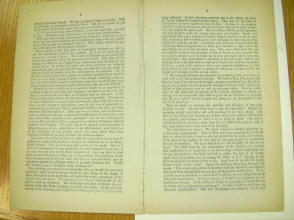
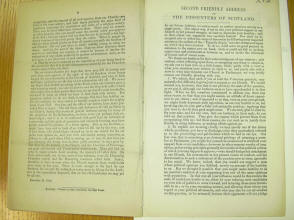
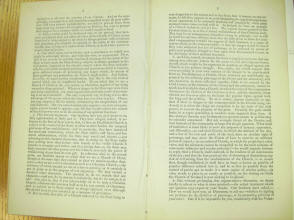
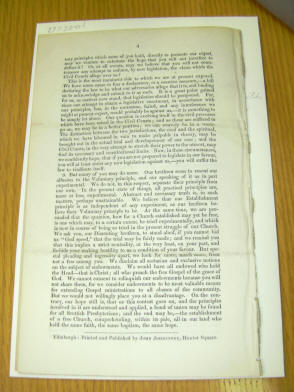 |
